Blog
Jewellok is a professional pressure regulator and valve manufacturer and supplier.
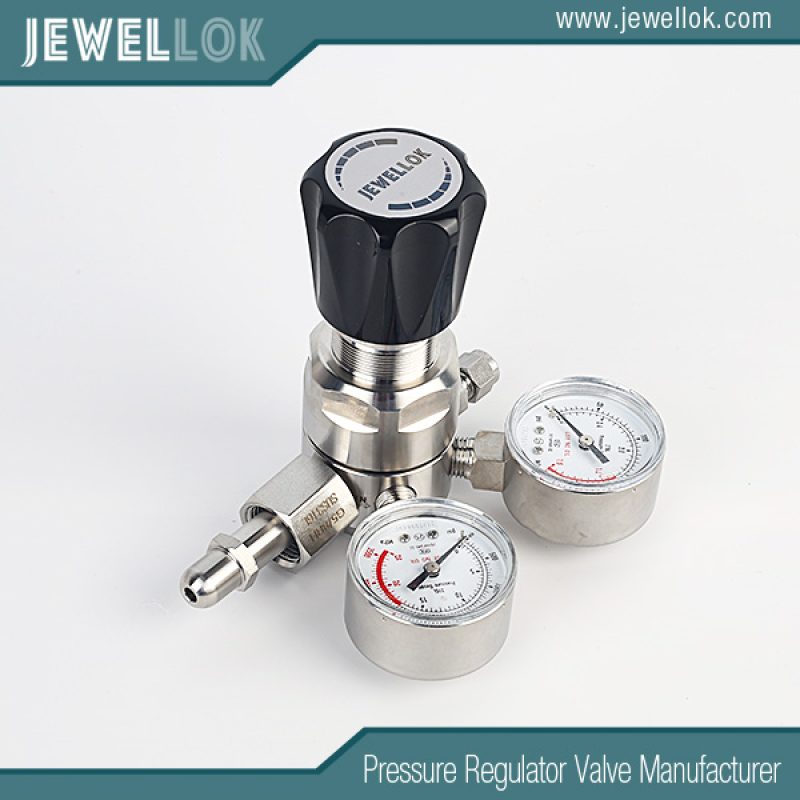
What Is A High Purity Gas Regulator?
- Pressure Regulator Valve Manufacturer
- China High purity gas regulator Manufacturer, china ultra high purity gas regulator manufacturer, High purity gas regulator Manufacturer, High purity gas regulator Manufacturer china, high purity gas regulator manufacturer in china, high purity gas regulator manufacturer in india, high purity gas regulator manufacturer in korea, high purity gas regulator manufacturer in malaysia, high purity gas regulator manufacturer in taiwan, high purity gas regulator manufacturer in thailand, high purity pressure regulator manufacturer, High-Purity High-Flow Gas Regulators, ultra high purity gas regulator manufacturer in philippines, ultra high purity gas regulator manufacturer vietnam
- No Comments
What Is A High Purity Gas Regulator?
Introduction
In industries where the purity of gases is paramount, high purity gas regulators serve as essential tools. These specialized devices are designed to control the pressure of gas delivered from a cylinder or supply system while ensuring that the gas remains free from contamination. Unlike standard gas regulators, which focus primarily on pressure regulation, high purity gas regulators are engineered to maintain the integrity of the gas, preventing impurities that could compromise sensitive processes or experiments. This makes them indispensable in fields such as semiconductor manufacturing, pharmaceuticals, biotechnology, and analytical chemistry.
Gas purity is critical because even trace amounts of contaminants—such as moisture, particles, or reactive compounds—can lead to significant issues. For example, in semiconductor manufacturing, impurities can cause defects in microchips, while in pharmaceuticals, they can contaminate sterile environments or affect drug quality. High purity gas regulators address these challenges by incorporating advanced materials and designs that minimize the risk of contamination. This article explores what high purity gas regulators are, how they work, their components, applications, types, selection criteria, and maintenance practices, providing a comprehensive understanding of their role in modern industries.
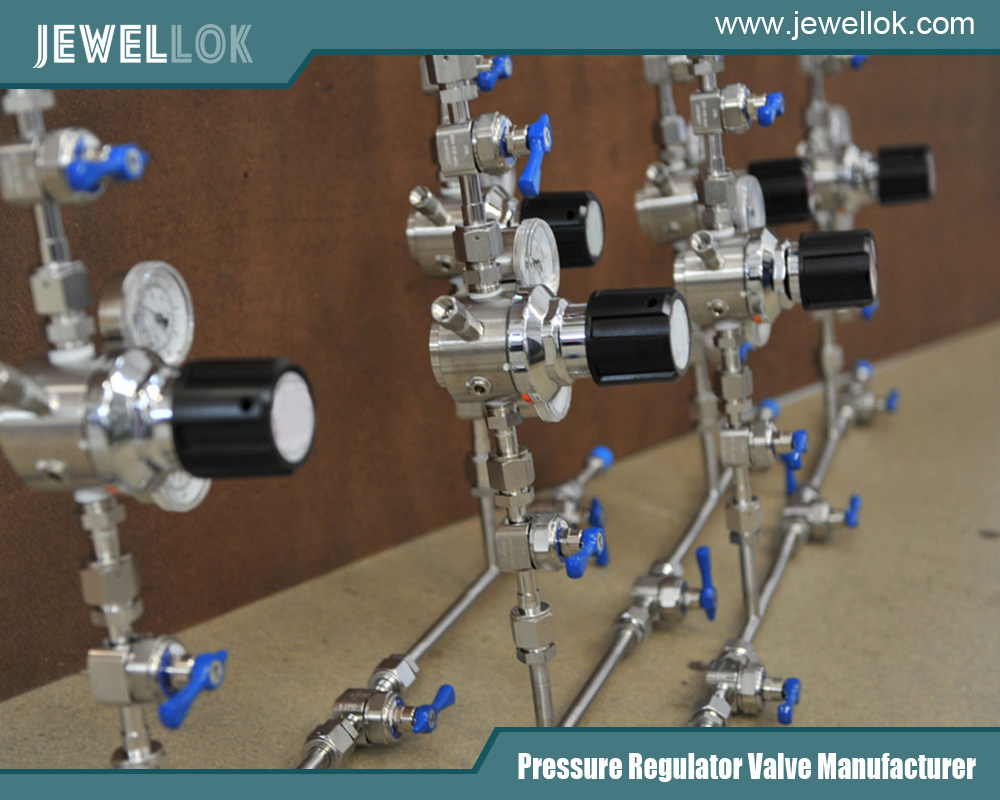
How It Works
At its core, a high purity gas regulator functions similarly to a standard gas regulator: it reduces the high pressure of gas from a cylinder (often exceeding 2000 psi) to a lower, usable pressure (typically between 0 and 500 psi, depending on the application). However, its defining feature is its ability to perform this task without introducing contaminants into the gas stream. Several key design elements enable this:
Inert Materials: High purity gas regulators are constructed from materials that do not react with the gas or release contaminants. Stainless steel, particularly 316L grade, is commonly used due to its corrosion resistance and inert properties. For highly reactive gases, specialty alloys like Hastelloy or Monel may be employed.
Diaphragm Design: The diaphragm, which adjusts to maintain consistent pressure, is made from materials with low outgassing properties—meaning they do not release trapped gases or particles. Materials like Hastelloy, Elgiloy, or even Teflon-coated metals are chosen to ensure the gas remains uncontaminated.
Minimal Dead Volume: The internal design minimizes “dead volume”—areas where gas can stagnate and potentially pick up contaminants. By reducing these zones, the regulator ensures a smooth, continuous flow of pure gas.
Polished Surfaces: The internal surfaces of the regulator are often electropolished to a mirror-like finish. This smoothness prevents particles from adhering to the surfaces, reducing the risk of contamination during gas delivery.
These features work together to maintain the gas’s purity from the source to the point of use. For instance, in ultra-high purity applications, regulators may also include additional filtration systems or be assembled in cleanrooms to further eliminate contamination risks.
Components
A high purity gas regulator comprises several components, each engineered to support both pressure control and gas purity:
Inlet Connection: This connects the regulator to the gas cylinder or supply line. Made from stainless steel or compatible alloys, it features a precision-engineered seal to prevent leaks and external contamination.
Pressure Gauge: Typically, two gauges are present—one for inlet pressure and one for outlet pressure. These gauges are calibrated for accuracy and constructed from materials that do not shed particles or react with the gas.
Diaphragm: The diaphragm is the heart of the regulator, flexing to adjust gas flow and maintain stable pressure. In high purity models, it is made from non-reactive, low-outgassing materials to avoid contamination.
Valve Mechanism: This controls the gas flow through the regulator. It is designed with tight tolerances to minimize dead volume and is often made from the same inert materials as the body to ensure compatibility with the gas.
Outlet Connection: The point where gas exits the regulator, this connection is also leak-proof and compatible with downstream equipment, ensuring purity is maintained to the application.
Body: The main housing, usually stainless steel, encases all components and is designed to withstand high pressures while preventing corrosion or gas interaction.
Each component is meticulously crafted and assembled to ensure the regulator performs reliably in high-stakes environments.
Applications
High purity gas regulators are critical in industries where gas contamination can have costly or dangerous consequences. Here are some key applications:
Semiconductor Manufacturing: The production of microchips relies on processes like chemical vapor deposition (CVD) and etching, which use gases such as nitrogen, argon, or silane. Even parts-per-billion (ppb) levels of impurities can cause defects, making high purity regulators essential for delivering uncontaminated gas.
Pharmaceuticals: Gases like oxygen or nitrogen are used in drug manufacturing, often in sterile environments or for processes like lyophilization (freeze-drying). Regulators ensure these gases meet stringent purity standards, preventing contamination that could compromise patient safety.
Analytical Chemistry: Instruments such as gas chromatographs and mass spectrometers require high purity carrier gases (e.g., helium) to produce accurate results. Regulators maintain gas integrity, ensuring reliable data for research and quality control.
Biotechnology: In cell culture or fermentation, gases like carbon dioxide or oxygen must be pure to avoid harming biological samples. High purity regulators support these delicate processes by delivering uncontaminated gas.
Food and Beverage: In packaging or carbonation, high purity gases like carbon dioxide are used, and regulators ensure compliance with food safety standards by preventing contamination.
These applications highlight the versatility and importance of high purity gas regulators across diverse sectors.
Types
High purity gas regulators come in various types, each suited to specific needs:
Single-Stage Regulators: These reduce pressure in one step, from the cylinder to the desired output. They are simpler and cost-effective, ideal for applications with stable inlet pressure or less stringent precision requirements.
Two-Stage Regulators: These reduce pressure in two steps, offering greater stability and precision. They are preferred in applications where inlet pressure fluctuates (e.g., as a cylinder empties) or where consistent outlet pressure is critical.
Back-Pressure Regulators: Unlike standard regulators that control downstream pressure, these maintain a constant upstream pressure. They are used in systems requiring pressure relief or precise control of gas sources.
Specialty Regulators: Designed for corrosive or reactive gases (e.g., chlorine or ammonia), these use materials like Teflon or Monel to prevent reactions that could compromise purity or damage the regulator.
The choice of regulator type depends on factors like the application’s pressure stability needs, gas properties, and operational complexity.
Selection Criteria
Choosing the right high purity gas regulator requires careful consideration of several factors:
Gas Type: The regulator must be compatible with the gas. For example, inert gases like argon require different materials than corrosive gases like hydrogen chloride.
Flow Rate: The regulator should support the application’s required flow rate (e.g., liters per minute) without compromising purity or pressure control.
Pressure Range: Inlet pressure (from the cylinder) and desired outlet pressure must fall within the regulator’s specifications.
Material Compatibility: All wetted components (those in contact with the gas) must resist corrosion or reactions with the gas to maintain purity.
Purity Level: Applications vary in purity needs—e.g., 99.999% (five nines) for semiconductors versus 99.9% for less critical uses. The regulator must meet or exceed these requirements.
Environmental Conditions: Operating temperature, humidity, or exposure to external contaminants may influence material or design choices.
Certifications: Industries like pharmaceuticals may require regulators to meet standards such as USP Class VI or FDA compliance.
A thorough assessment of these factors ensures the regulator aligns with both technical and regulatory demands.
Maintenance and Care
To sustain performance and purity, high purity gas regulators require diligent maintenance:
Regular Inspection: Check for wear, corrosion, or leaks. Damaged seals or diaphragms should be replaced immediately to prevent contamination.
Cleaning: Use manufacturer-approved methods, such as purging with inert gas or cleaning with non-residue solvents, to avoid introducing impurities. Cleaning should occur in a controlled environment if possible.
Part Replacement: Worn components like diaphragms, seals, or valves should be replaced with OEM (original equipment manufacturer) parts to ensure compatibility and purity.
Storage: When not in use, store regulators in a clean, dry environment, ideally capped to prevent dust or moisture ingress.
Follow Guidelines: Adhere to the manufacturer’s maintenance schedule and procedures, which may include specific torque settings for connections or recommended service intervals.
Proper care extends the regulator’s lifespan and ensures consistent delivery of high purity gas.

Conclusion
High purity gas regulators are vital tools in industries where gas purity directly impacts quality, safety, and success. By controlling pressure while preventing contamination, they enable cutting-edge processes in semiconductor manufacturing, life-saving advancements in pharmaceuticals, and precise measurements in analytical chemistry. Their sophisticated design—featuring inert materials, polished surfaces, and minimal dead volume—sets them apart from standard regulators, meeting the exacting demands of modern applications.
As technology evolves, the need for even higher purity levels will drive further innovations in regulator design. Understanding their functionality, components, and maintenance needs empowers users to select and care for these devices effectively, ensuring they perform reliably in critical operations. Whether in a cleanroom or a laboratory, high purity gas regulators remain unsung heroes, safeguarding the integrity of processes that shape our world.
For more about what is a high purity gas regulator, you can pay a visit to Jewellok at https://www.jewellok.com/product-category/ultra-high-purity-regulators/ for more info.
Recent Posts
How a Gauged Two-Stage Propane Gas Pressure Regulator Works
The Best Natural Gas Pressure Regulators Manufacturers in USA
How to Choose the Right Laboratory Gas Valves
The Top High Pressure Hydraulic Needle Valve Manufacturer in 2025
Why the Top Companies Choose Ultra-High Purity Diaphragm Valves
How to Choose the Material Properties of Ball Valve Core?
Tags
Recommended Products
-
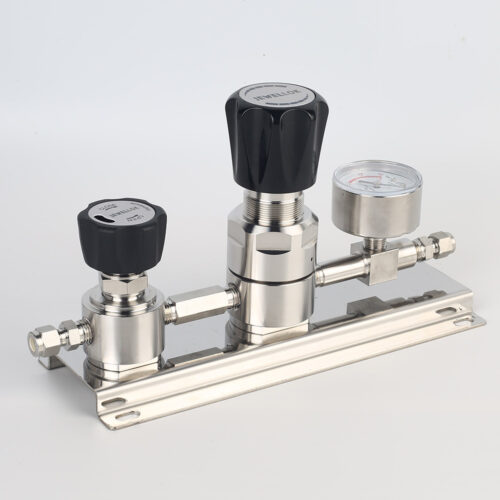
High Purity High Flow Pressure Control Regulators & Valves Gas Stick Assemblies JSR-2TG Series
-
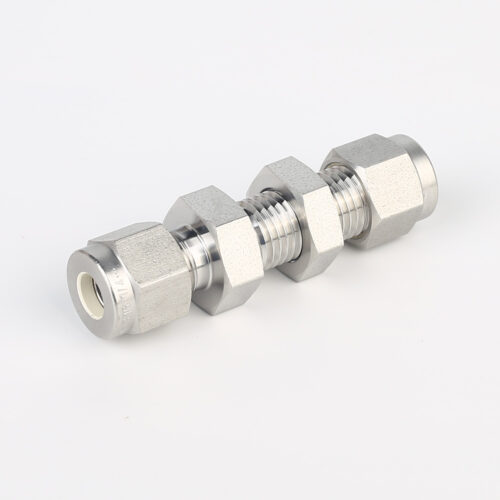
774L Stainless Steel UHP Fittings Butt Weld Bulkhead Union For High Flow Special Gas Fluid
-
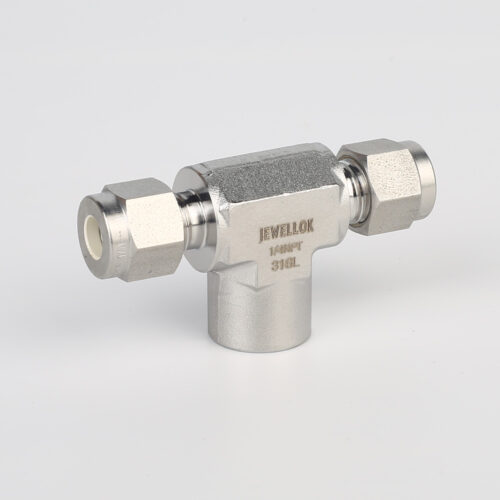
772 LF Female Branch Tee | Stainless Steel Tube Fitting Female Branch Tee 1/2 in. Tube OD x 1/2 in. Tube OD x 3/8 in. Female NPT
-
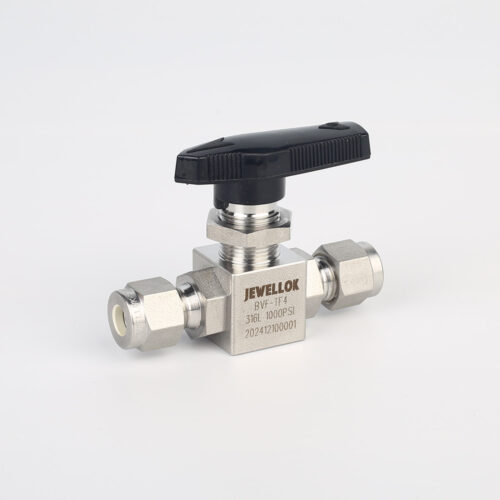
Stainless Steel High Purity High Temperature Pneumatic Actuated Ball Valves JBV2 Series
-
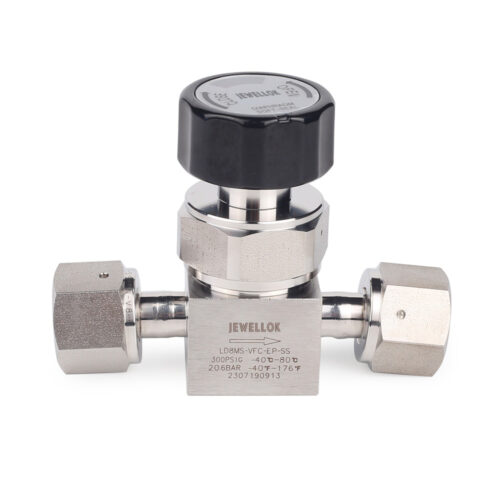
Flow Control Stainless Steel Low Pressure Manual Diaphragm Valve For High Purity And Ultra High Purity Gases
-
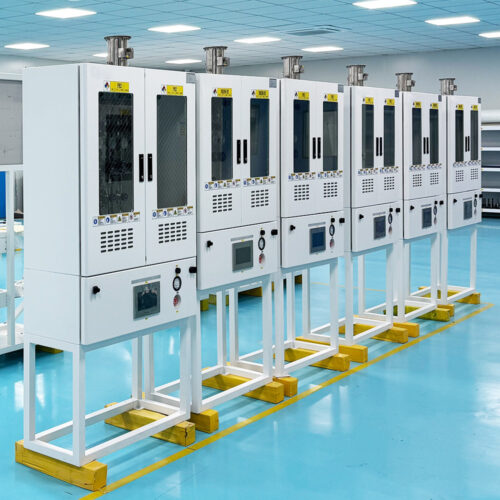
VMB Valve Manifold Box And Panel Gas Cabinet, BSGS Gas Cabinets, TMA Gas Cabinets, Scrubber Tail Gas Treatment Cabinets
-
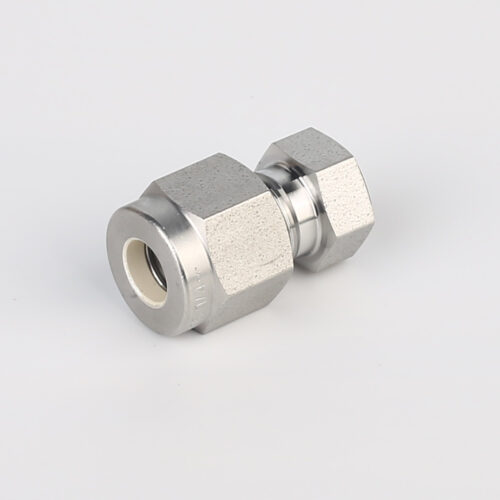
7108L Cylinder Cap Connectors For Ultra High Purity Gases
-
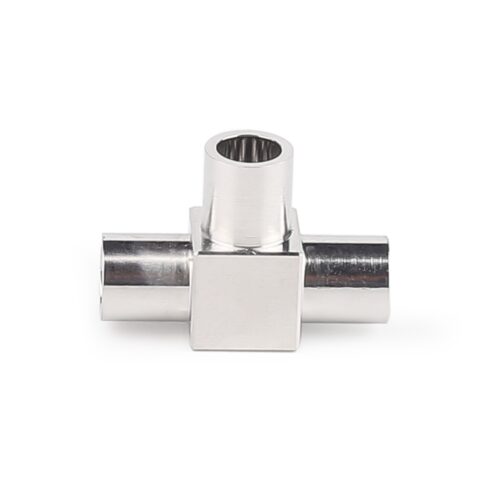
Stainless Steel Ultra High Purity Mini Butt Weld Mini Tee Reducer MTRW Series Fittings